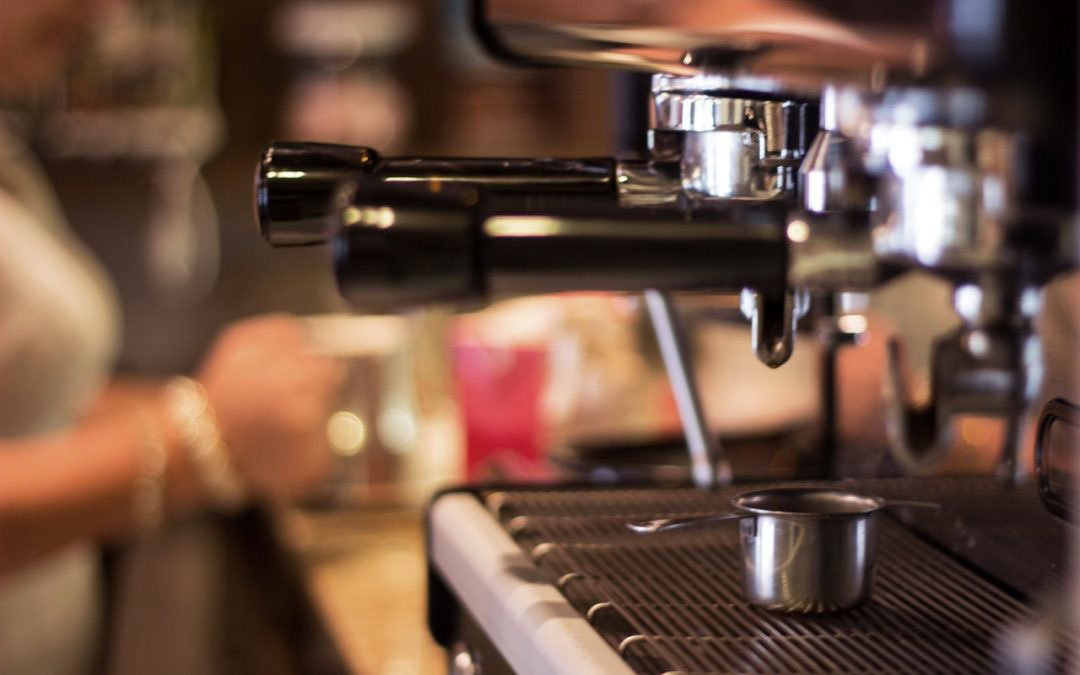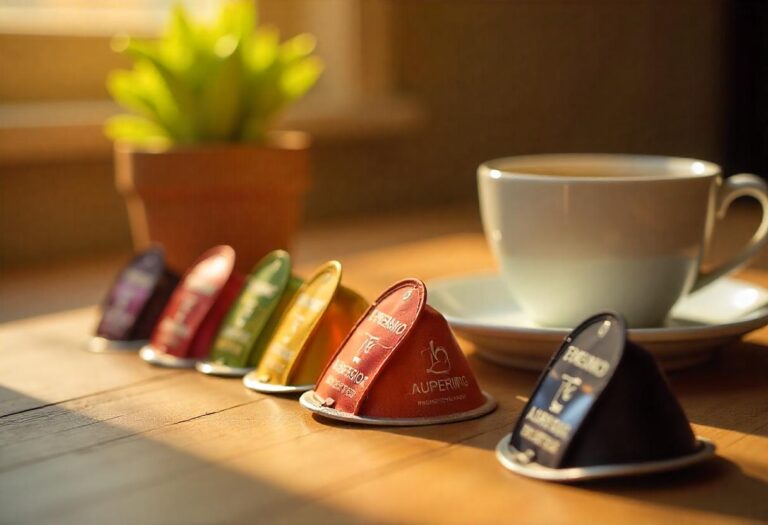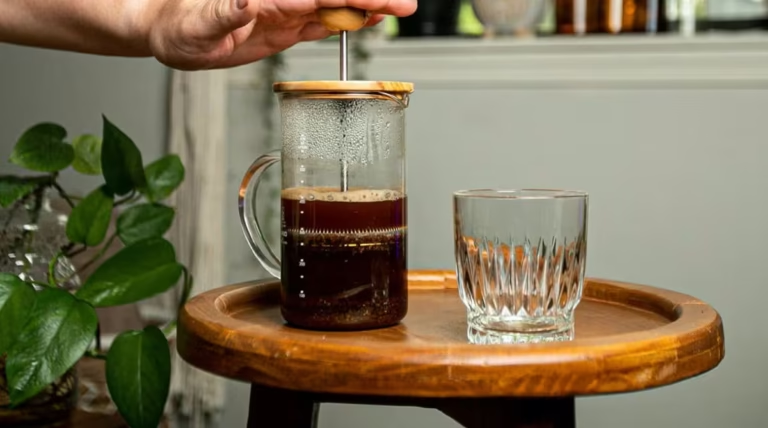How to Clean a Coffee Maker Without Vinegar

If your expensive coffee maker is suddenly spitting out bitter coffee that just doesn’t taste good, it may just need to be cleaned. Yes! Coffee makers actually need cleaning! Many people recommend cleaning your coffee pot with vinegar, but if that isn’t your cup of tea (pun intended), there are plenty of other options out there. So, if you need to learn how to clean a coffee maker without vinegar, we’ve got you covered.
Some people can’t stand the smell of vinegar, no matter how good it cleans. Thankfully, you aren’t out of luck if you are one of these people. There are lots of other ways to clean your coffee maker so that you can get your morning ritual back on track.
Although vinegar is considered the gold standard when it comes to cleaning and descaling your coffee maker. Let’s dive in and learn how to clean a coffee maker without vinegar.
Bacteria, Yeast, and Mold: A Glimpse Inside Your Coffee Maker
When you think of the germiest place in your home, you probably think of your bathroom. However, it’s not the doorknob of your restroom or your toilet seat that you should be worrying about.
According to a 2011 NSF International study, your kitchen is the grimiest place in your entire household. And your coffee maker is far ickier than you think. Half of the coffee makers in the study had mold and yeast growing in their reservoirs. In another study, java machines were found to be packed with 35 to 67 different kinds of bacteria.
And get this, some of the bacteria that reside in your coffee maker live in your colon.
The idea of microbes and mold in your coffee is probably enough to make you want to gag.
But it gets worse, yeast and mold trigger gastrointestinal illnesses and aggravate existing respiratory problems.
The elimination of germs is not the only reason why you should be cleaning your coffee maker.
You see, coffee beans have natural oils in them. With time, these oils build up in your coffee maker, resulting in bitter-tasting coffee.
Even if your coffee maker looks clean, chances are it’s pretty filthy on the inside. It’s just not visible to the naked eye.
Furthermore, a dirty coffee maker slows you down. Over time, calcium deposits build up in your coffee maker, restricting water flow and resulting in lower brewing temperatures. Lower brewing temperatures not only increase the brew time but also dilute the flavor of your coffee.
The cleaner your coffee machine, the longer it’ll last.
How Not to Be a Slob
Most people clean their coffee maker every day, which is great. However, you can take it a step further by washing your coffee machine with warm, sudsy water after every use.
Just how often you should decalcify (i.e., remove mineral scale buildup) your coffee maker depends on how often you use it as well as how hard your tap water is.
Coffee fiends that live in hard water areas should decalcify their coffee makers once a month.
On the other hand, those who live in soft water areas can get away with decalcifying their coffee makers every two to three months.
Vinegar, or Why Your Coffee Tastes Weird
The main compound in vinegar is acetic acid, formed via the fermentation of starches and sugars. It is this acetic acid that makes vinegar so acidic and consequently, so useful when it comes to cleaning.
Acid kills not only bacteria, but also viruses. It chemically changes the proteins that make up these microscopic germs and destroys their cell structures.
Why vinegar is awesome
Vinegar is effective in killing off bacteria and mold. It’s also a powerful descaler and can easily remove mineral buildup from tap water.
Additionally, vinegar is edible, which means that you’re not putting your health at risk by accidentally ingesting it.
Finally, and perhaps most importantly:
Vinegar is cheap.
Why vinegar is inferior to other cleaning solutions
Vinegar has a rather strong odor, which isn’t particularly pleasant. Furthermore, unless you rinse your coffee maker like a maniac, you’re bound to end up with weird-tasting coffee, at least for a little while.
Also, vinegar doesn’t always work that well. In fact, it’s less effective than certain commercial descalers. Sure, you’ll probably get the same effect using vinegar eventually, but prepare for a lot of hard work and multiple brew cycles.
You might want to avoid using vinegar on certain coffee machines, such as Nespresso, too. The reason is pretty simple: the acetic acid in white vinegar attacks the pipes within your machine, potentially causing leaks.
How to Clean a Coffee Maker Without Vinegar
If you’re wondering how to clean a coffee maker without vinegar, don’t worry. We’ve got your back.
Dishwashing soap to the rescue
If you’re new to the concept of decalcifying, trying to figure out how to clean a coffee maker without vinegar can be a real headache.
But it doesn’t have to be hard.
In fact, you can utilize the one thing that you already use to clean other household items. We’re talking about dishwashing soap, of course.
However, when choosing a dishwashing soap, make sure that it’s fragrance-free. Otherwise, the soap will linger on the surface, thus impacting the taste (and aroma!) of your coffee.
Salt and ice works miracles
Salt and ice removes not only stains but also mineral deposits and burned coffee stains.
Make sure that you use table salt, though. Sea salt is much coarser and can scratch your coffee maker if it doesn’t dissolve well. After all, you’re trying to learn how to clean a coffee maker without vinegar, not how to destroy it!
Baking soda is a kitchen staple for a reason
Baking soda is a pantry staple, at least in the homes of avid bakers. You can’t make a fluffy cake without it, but according to some, you also can’t clean your coffee maker without it.
Running a solution of water and baking soda through your coffee pot will clean the inner mechanisms of your coffee maker and remove odors.
However, some people believe that baking soda is most effective when it comes to cleaning the exterior of your coffee machine as opposed to the interior.
Lemon juice is an excellent substitute for vinegar
When you’re researching how to clean a coffee maker without vinegar, you’ll undoubtedly come across lemon juice. Lemon juice is probably the best substitute for vinegar because it’s just as acidic.
The only downside is, you’ll need quite a few lemons to get the job done. If you’re hand-squeezing your lemons, you’re bound to find the method somewhat tedious.
Of course, you can go ahead and purchase concentrated lemon juice, but that’s one costly way to clean your coffee machine.
Also, keep in mind that if you’re repeating the process, you need to give the lemon juice solution time to cool down before you use it again (or you can prepare a new batch). Hot lemon juice can damage your coffee maker.
Citric acid is convenient
If spending hours squeezing lemons doesn’t appeal to you and if you don’t want to waste money on costly lemon juice solutions, you can always use citric acid instead.
Most commercial cleaning tablets and solutions contain citric acid as their main ingredient anyway.
Citric acid is available for purchase in bulk. Best of all, it’ll last you forever.
Denture tabs are useful too
When you’re pondering how to clean a coffee maker without vinegar, the thought of using denture tabs is unlikely to pop into your head.
But denture cleaning tabs have alkalizing and antibacterial properties.
Furthermore, denture tabs are incredibly convenient.
They’re scent-free and as such require only one round of rinsing. Denture tabs also dissolve stains, which means that you can avoid scrubbing your coffee pot by hand.
Plus, denture tabs are cost-effective. A box of around 100 denture tabs will only set you back 20 bucks.
Rice is not just for cooking Pad Thai
If the carafe of your coffee maker is looking grubby, grab a bag of rice from your kitchen press.
Fill the carafe with warm water that is somewhat sudsy and add a little bit of rice. Swish the mixture about until the gunk loosens up. Remove any debris using a scrub sponge and rinse.
Don’t overlook commercial descalers
Still not sure how to clean a coffee maker without vinegar? Use a commercial descaling solution (which is effectively just a blend of different acids).
Full Circle and Dezcal are just two commercial descaling agents that can be used to clean your coffee maker. Both remove mineral deposits left by hard water.
Every Coffee Maker Is Different
The answer to how to clean a coffee maker without vinegar depends on the type of coffee maker that you use.
French press
You’ll need:
- Mesh strainer
- Denture tabs
- Brush
- Soft cloth
Method:
- Remove the plunger and fill the carafe with warm water. Swirl it around to loosen the grounds.
- Pour the water and the grounds into a mesh strainer over the sink. The grounds will end up in the strainer whereas the water will drain down the sink.
- Bin the grounds (or put them in your compost).
- Separate the lid, plunger, disks, and filter screens.
- Fill your sink with warm water. Then, drop in three to four denture tablets. When they dissolve, put all of the parts of your coffee maker in the sink and watch the coffee residue dissolve.
- Scrub off any remaining residue and dry thoroughly.
Pour-over coffee maker
You’ll need:
- Ice cubes
- Salt
- Dish soap
- Lemon juice
- Water
- Chemex coffee maker brush
Method:
- Fill the bottom part of your pour-over coffee maker (make sure it’s at room temperature) with a few ice cubes (or a cup of crushed ice). You might need to adjust the amount of ice depending on how small or big your pour over coffee maker is.
- Add four teaspoons of salt, a tablespoon of water and a tablespoon of lemon juice.
- Swish the mixture around. The ice and salt will remove dried coffee gunk whereas the water will ensure that it’s not so abrasive that it scratches the glass.
- When the carafe is clean, pour the mixture down the drain. Rinse with cold water.
- Repeat the process until there’s no remaining residue. You can also use a Chemex brush and some dish soap if needed.
AeroPress
You’ll need:
- Water
- Dish soap
- Brush
Method
- Unscrew the cap. Then, press the AeroPress until you see both the filter and condensed grounds popping out.
- Rinse the coffee maker. Detach the rubber seal from the end of the plunger and wash it with warm water and some dish soap. You can also wash your AeroPress in the dishwasher. Just make sure you place it in the top shelf.
- If the chamber gets sticky (unlikely, but it does happen sometimes), wash it with lemon juice.
Keurig
When it comes to cleaning your Keurig, nothing beats commercial descaling solution.
Here is how to clean your Keurig using a descaling solution:
Drip coffee maker
You’ll need:
- Water
- Citric acid powder
Method:
- Rinse the basket, pot, and reservoir of your coffee maker to ensure that no grounds remain.
- Fill the reservoir with six to eight cups of water. Then, add two teaspoons of citric acid powder.
- Turn your coffee machine on and let it go through a brew cycle.
- Once the brew cycle is complete, dump the solution and rinse the coffee maker with hot water.
- Fill the reservoir with clean water and let it run through another brew cycle to remove excess citric acid.
Percolator
You’ll need:
- Baking soda
- Water
- Nonabrasive tool
Method
- Fill the pot with water and then add two to three tablespoons of baking soda. Let it perk away.
- After the water cools down, scrub the pot with a nonabrasive tool.
- Rinse thoroughly, then dry with a clean towel.
Semi-automatic espresso machine
Semi-automatic espresso machines are among the most popular coffee machines out there.
But, even though they’re automatic, they still need cleaning!
Here’s how to clean a semi-automatic single-boiler espresso machine:
Tips and Tricks to Keep Your Coffee Maker Spotless
First things first: Make sure that you read the user manual of your coffee machine. Most manuals detail how to clean a coffee maker without vinegar.
Secondly, skip the dishwasher. While using a dishwasher is indeed an option for cleaning glass and dishwasher-safe plastics, it can also lead to warping and breakage.
Thirdly, when you’re cleaning your coffee maker, don’t forget to show your other coffee tools, such as bean grinders, some love too! A hot water rinse is usually more than enough. Don’t forget to dry the tools carefully before you store them away. Speaking of storage: if you keep the top of your coffee maker open at all times, the air will circulate freely. Consequently, your coffee maker will pretty much never get damp or moldy.
Finally, never clean your coffee maker with harsh chemicals such as bleach. You don’t want to ingest it accidentally!
Would You like Mold with Your Cup of Coffee?
If you could see everything that’s happening in your coffee maker at a microscopic level, you’d be so disgusted you’d probably swear off coffee for life. Of course, life without coffee would be unbearable.
Even though your coffee maker might be gross at the moment, there’s no reason why it has to remain that way. Cleaning it couldn’t be easier. Best of all, a clean coffee maker means not only no bacteria (or, in any case, fewer bacteria) but also better-tasting coffee.
While most people favor vinegar when it comes to cleaning their coffee makers, you don’t necessarily have to use the smelly substance if you don’t want to.
There is no one answer to how to clean a coffee maker without vinegar. Rather, you have plenty of options. Lemon juice, baking soda, and even denture tabs are all amazing at removing coffee stains, mineral buildup, and grime.
So, take your pick and get to polishing your coffee maker! Your reward? A fantastic cup of joe, of course.






